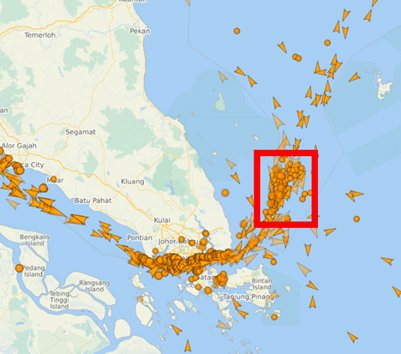Iranian Tankers Go Back Into The “Dark Ages”
There was some mystery in mid-October when most Iranian-owned tankers simultaneously turned on their AIS location systems, having mostly travelled in the “dark” since 2018 when the United States re-imposed sanctions. The Iranian leadership remains in a highly nervous state after the 12-Day War in June, issuing a flow of contradictory statements and evidently fearing a resumption of Israeli and American attacks. But it was difficult to see the logic in Iranian tankers broadcasting their locations as a response to the re-imposition of UN sanctions, which occurred on September 28.
The Maritime Intelligence company Windward has now detected that once again, most of the Iranian fleet has resumed its sanctions-evading behavior. It reports that 52 of the 88 Iranian tankers, mostly belonging to the National Iranian Tanker Company (NITC), were detected transmitting AIS signals between October 12–14. Of the 52 transmitting tankers, nine were located in the ship-to-ship transfer box in the Malaysian EEZ off the coast of Johore. However, after several days of telling the world where they were, only 25 were visible in AIS several days later, and by October 16, Windward was only detecting AIS signals from nine tankers.

Tankers in the transshipment box off the Malaysian coast of Johore on October 21, but AIS signals from NITC tankers are not showing up (VesselFinder)
In the UN Security Council vote in late September, Russia and China were unable to veto the automatic process which switched the snap-back sanctions back on. But since then, Russia and China have announced that they will not recognize the mandate of the United Nations in this matter, a move consistent with President Xi Jinping's long-term aim of breaking the Western-dominated post-1945 international relations framework. This may have given the Iranians the belief that by ending their AIS boycott, they were demonstrating the legitimacy of their position - and had the support of Russia and China in so doing. If this were the case, then the Iranians appear to have lost their nerve.
In shipping oil to China, where 90 percent of Iranian oil is exported, NITC tankers have to be visible and are exposed in some segments of their passage. Most have to pass through national waters in the Strait of Malacca area or elsewhere, and indeed, NITC tankers typically switch AIS transmitters back on for brief periods when navigating congested stretches of water. Tankers need to bunker and be resupplied; not every ship's need can be serviced either in Iran or at the destination port in China. And Chinese firms remain nervous about being listed for handling sanctioned Iranian oil, lest other aspects of their business are affected.
With renewed sanctions pressure from the United States and from other Western countries, those countries and entities that may have been prepared to turn a blind eye to the Iranian trade are becoming increasingly reluctant to do so. Travelling with their AIS systems switched on only made the conspiracies of those supporting the passage of Iranian tankers en route to China more obvious and embarrassing. Hence, the NITC fleet has returned to the dark ages.
Top photo Iranian file photo of tanker from Tasmin News Agency (CC BY 4.0)
Content Original Link:
" target="_blank">





















































